Locomotive Engineer Darrin Crone provides us with an insight into recent weeks’ work on restoring the great locomotive Sir Nigel Gresley.
Week commencing 2 December
The boiler – now at the Llangollen Railway Works – has now had all of its foundation rivets removed as well as nearly all of the stays requiring removal from the left-hand side sheet. The foundation ring sections of plate requiring replacement from the outer throat plate and back plate have also now been cut away. This represents very good progress. Having our own Boiler Project Engineer keeping progress under observation with his presence on site at Llangollen has the beneficial effect that any queries are quickly dealt with and progress is not held up.

This week we have also been in contact with the South Devon Railway. They inform us that the bogie wheels have now been re-tyred.
In the York workshop it gets dark around the loco at this time of year so we have installed some lighting comprising a number of fluorescent light fittings supported on wooden beams along the side of the loco work area. The wiring was completed and they were finally put up on Thursday. For now we have only got them on the right-hand side of the loco to see how effective they are. They were switched on this week as a test and we are very pleased with the effect. Unfortunately, we still have to use lead lamps as the new lights have to be safety tested before we can use them.
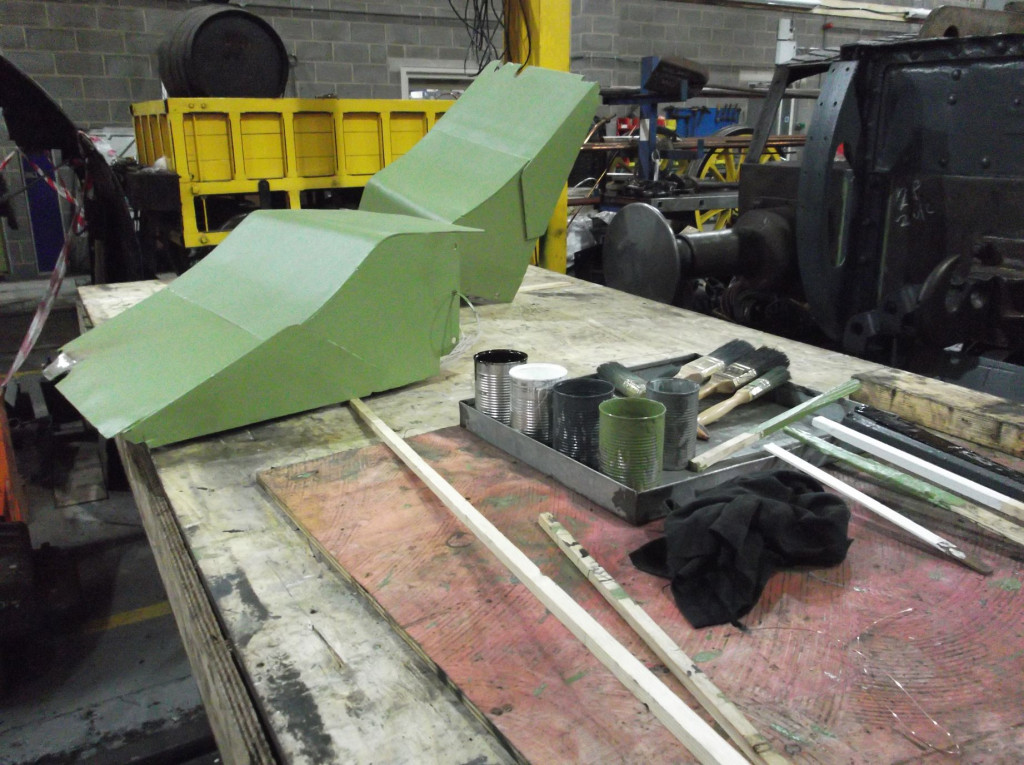
The de-carboning of the steam chest and passages on the middle cylinder continued this week using a variety of specially made tools. The passages are more direct to the saddle casting and chimney so there’s not so much to do.
Cleaning of the footplating continued this week. As a result of the cleaning the first coats of paint are now being applied to the upper surfaces between the inside of the footplate and the beading that locates the outside of the streamlined casing. The large “+”-shaped stretcher testing was completed last week so this week it was given a final clean and received its first coats of primer.
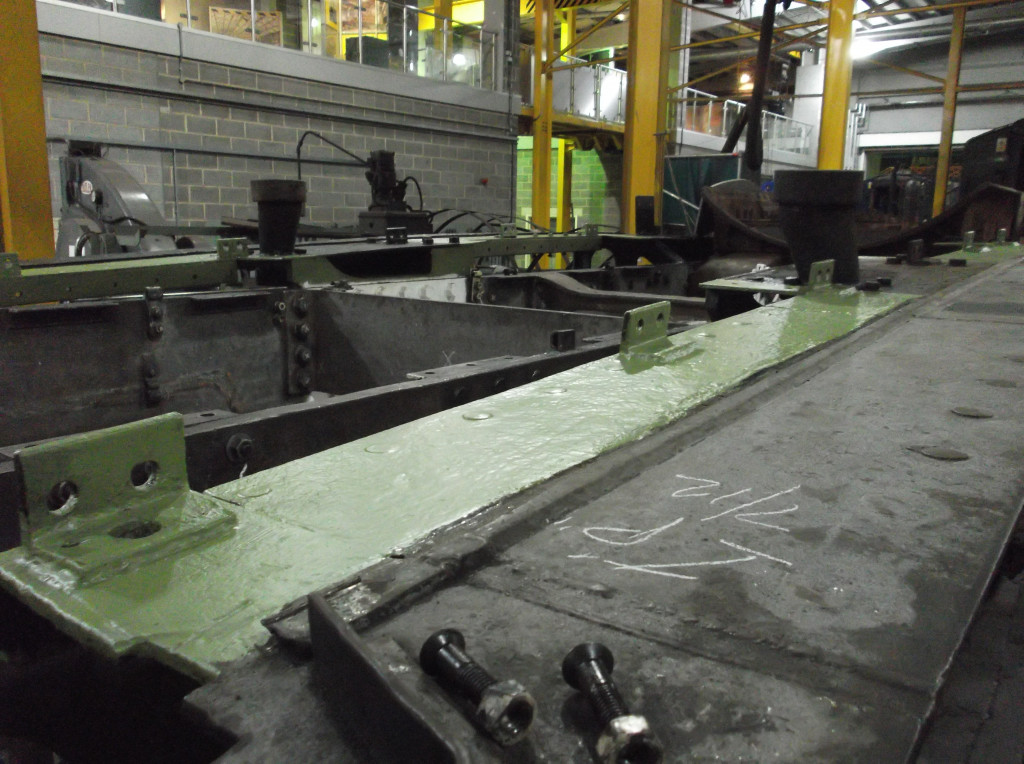
The right-hand side steam sandbox put on the loco last Saturday still needed some of its fixing holes reaming through and bolts making to fit. By the end of the week all holes were reamed and the box was finally bolted up in position.
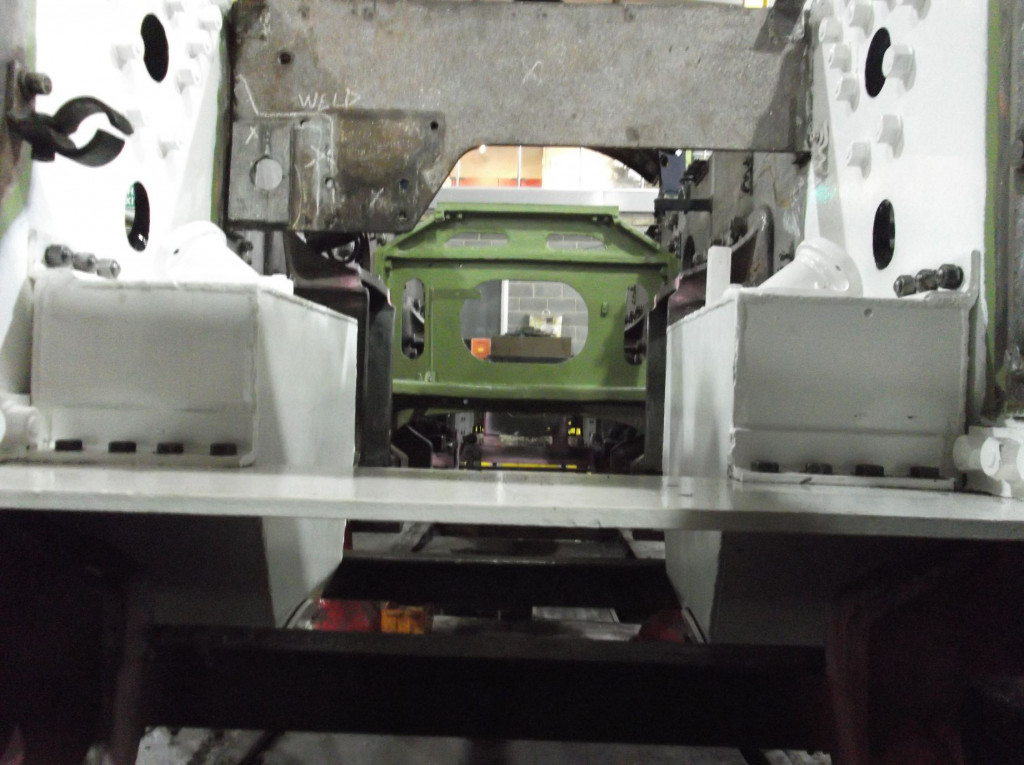
The attention of the reamer then turned to the dragbox and we have started reaming the holes where some of the dragbox bolts were removed.

Week commencing 9 December
This week we were visited by one of the boilersmiths from Llangollen. He reported that the left-hand side sheet has now been removed and a start has been made on removing the side stays.
In the workshop, the National Railway Museum’s Charlie Bird tested the new lighting on the right-hand side of the loco. As they have now been tested we can have them on continuously and they are very effective. The Engineering Team volunteers have now put up lights on the left-hand side of the loco.
The painting of the frames continued this week with footplating and frame stretchers receiving further coats of paint. The NDT of the frames is continuing around the frame’s horn cutouts where the axle boxes are fitted. Once these areas have been tested we can proceed to paint the expanse of the frame plates. The Painting Team Leader is doing a great job and putting a lot of time and effort into the job.


This week the final collection of the equipment we need for re-riveting the footplating and its brackets was done. Meanwhile, cleaning and repairs to the footplating have continued. The cracks that start at the corners of the access panels in the top of the footplating are being prepared for welding and a start was made on welding them up towards the end of the week.
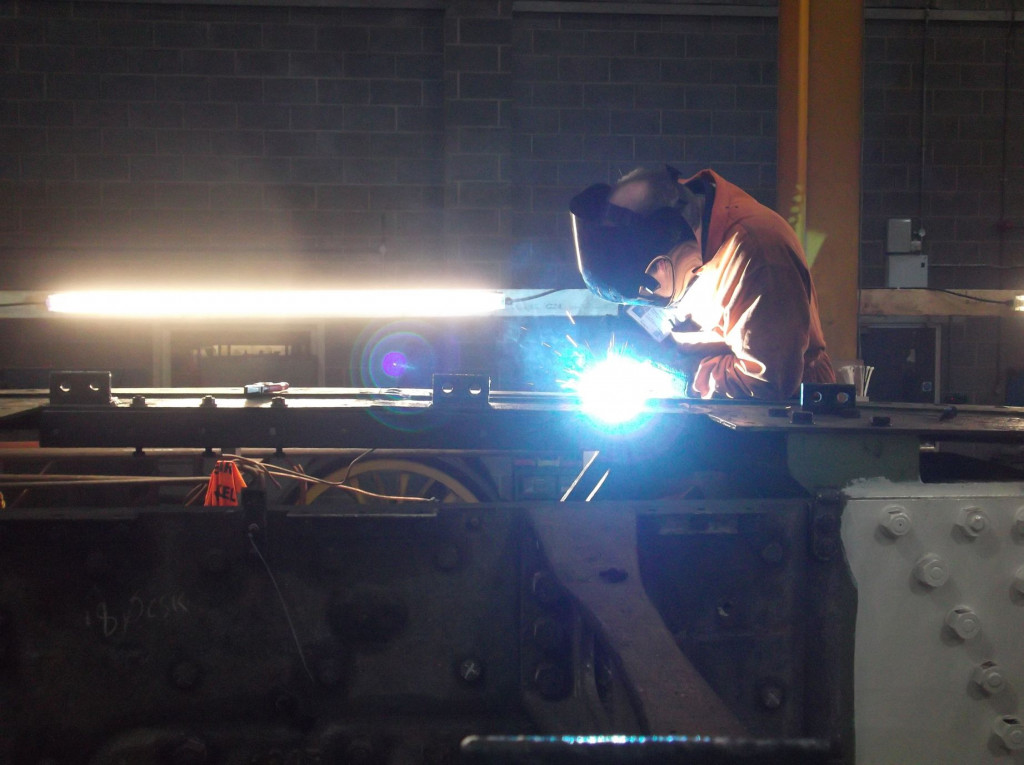
The renewal of the middle cylinder cover studs has also been started. The outside studs have had their threads cleaned up and they are fine for further service – but many of the inside ones are life-expired. They have been found difficult to extract, but a start has been made on these, too..
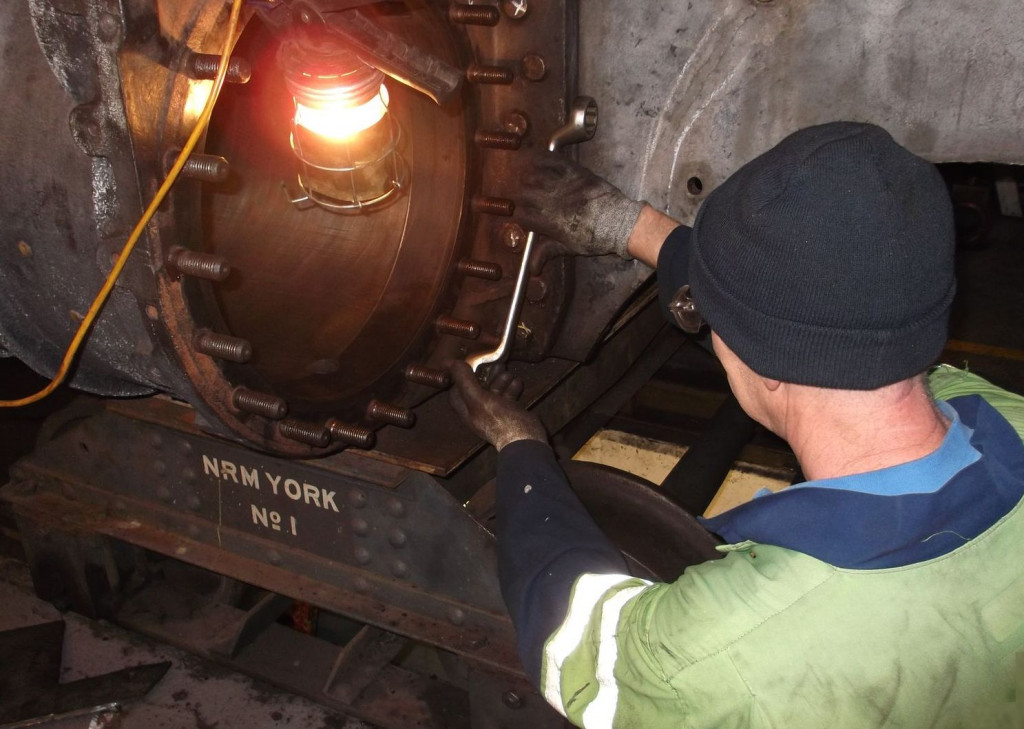
Meanwhile, reaming of the bolt holes has continued on the dragbox. They should be finished soon and fitted bolts can be made to suit. At the other end of the loco, decarboning continued at the top of the middle cylinder steam chest and some impressively large chunks of carbon were extracted.
As reported in a previous update, our Chief Mechanical Engineer requires renewal of the right-hand and middle valve liners. On Saturday the volunteer Engineering Team removed both of the right-hand liners – a job normally done by contractors. A fantastic job was done cutting them out without leaving a mark on the cylinder casting. Impressive considering that they are shrunk in with liquid nitrogen and so are incredibly tight.
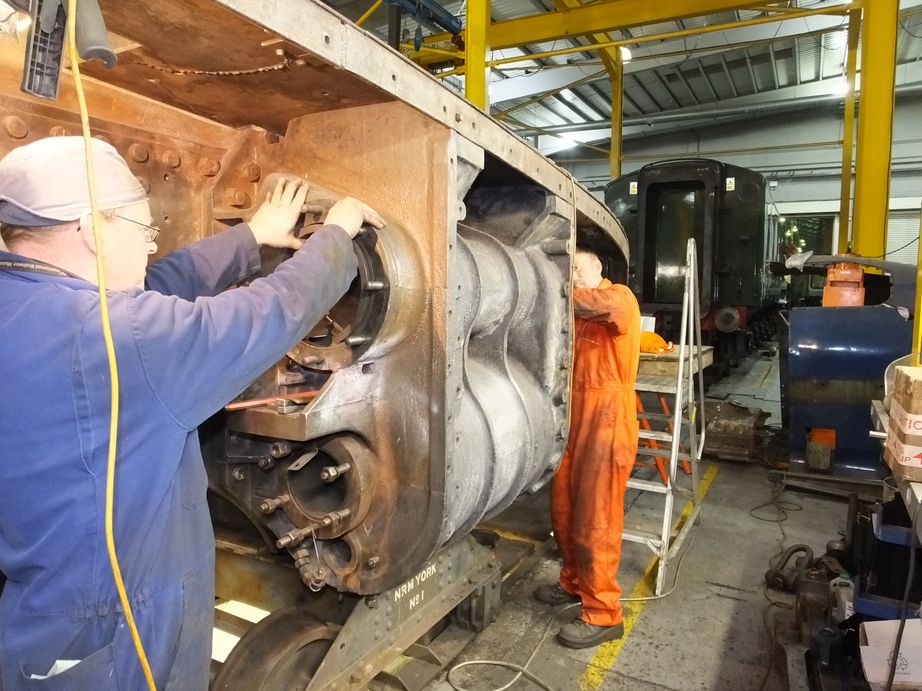
Week commencing 16 December
The footplating has cracked in a number of places, normally starting at the corners of the access panels. This isn’t part of the load-bearing structure of the locomotive but they will be repaired as part of the overhaul. Some are not accessible with the streamlining in place. As reported last week, some have already been welded up and work continued this week chasing other cracks and preparing them for welding.
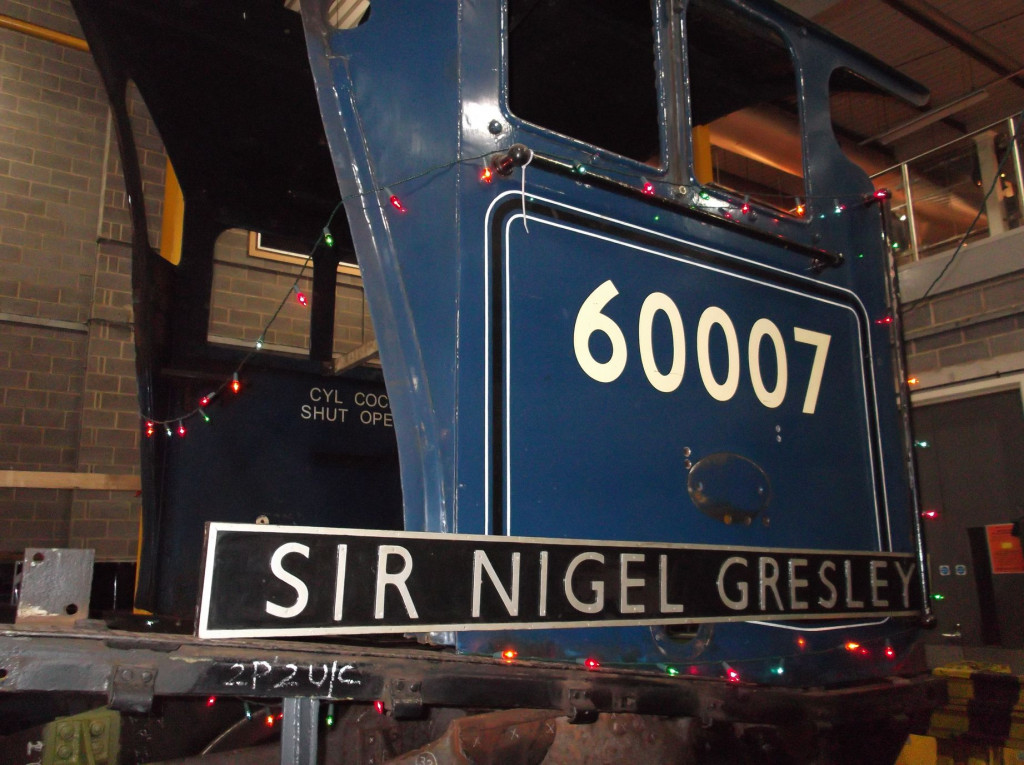
The dragbox reaming continues. The holes are looking very good but there are still some patches to take out. As there are five holes to do and they are deep, they take a long time. Removing carbon from the steam ports and passages continued this week, again producing some impressive lumps only accessible with the blastpipe casting removed.
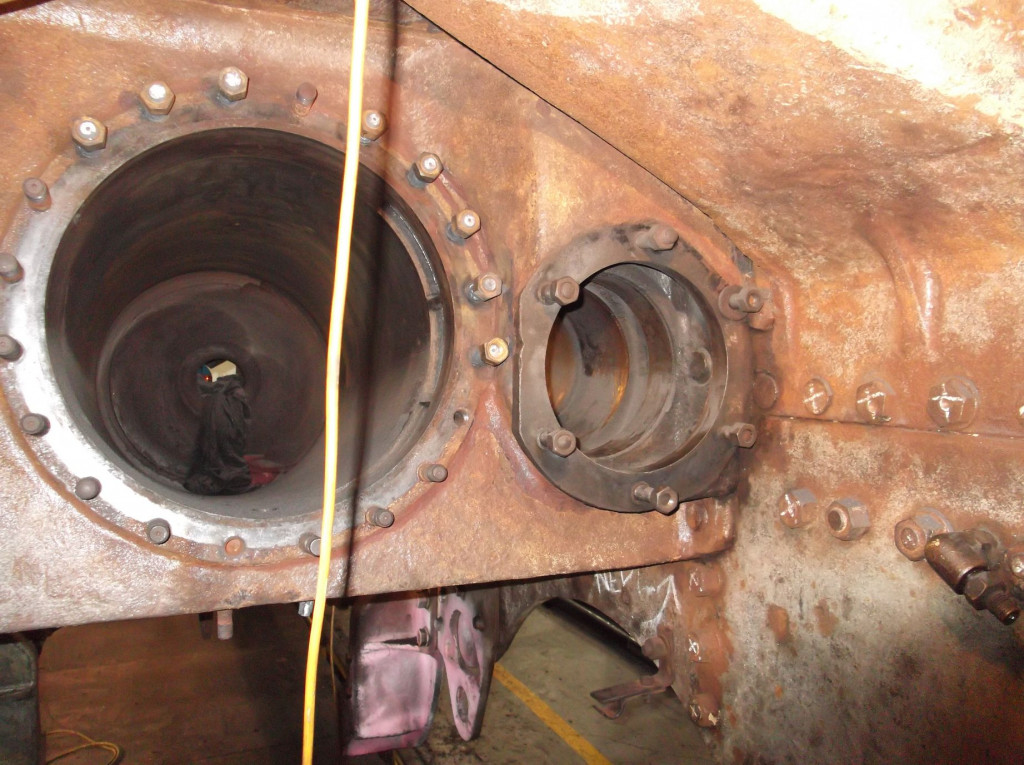
Painting is also continuing on the loco, however before it could restart the cast iron dust produced last Saturday when the right-hand valve liners were removed had to be cleaned off. Painting continued on the footplating and frame brackets. In front of the painters, Alan Pitt used the needle gun to refresh the surfaces of the Cartazzi frame spacer brackets before they received their first coat of paint.
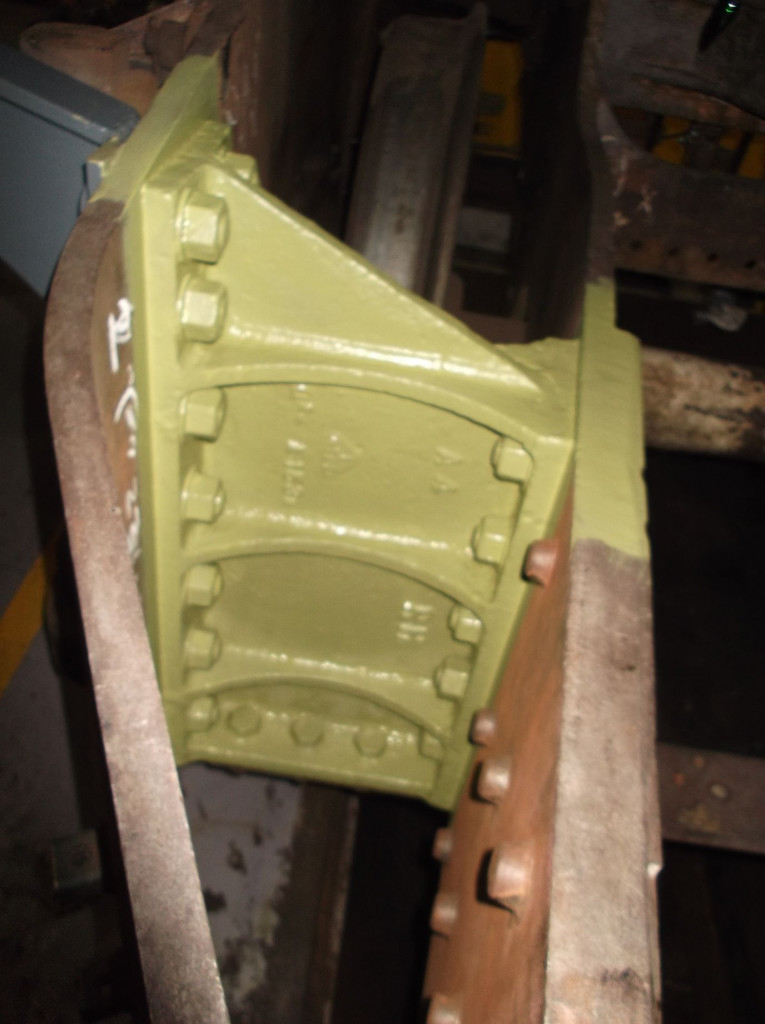
On Wednesday we were visited by our riveting expert. All the hoses, fittings and equipment are now on site and we went through our work programme. We are ready to start riveting in the new year. While on site he removed the last of the frame rivets that we will be renewing, identified during the frame survey.
We are working through the inspection and repair of the frames and have now arrived at the hornstays. The driving hornstays have both been removed this week, cleaned, needle-gunned and visually inspected.
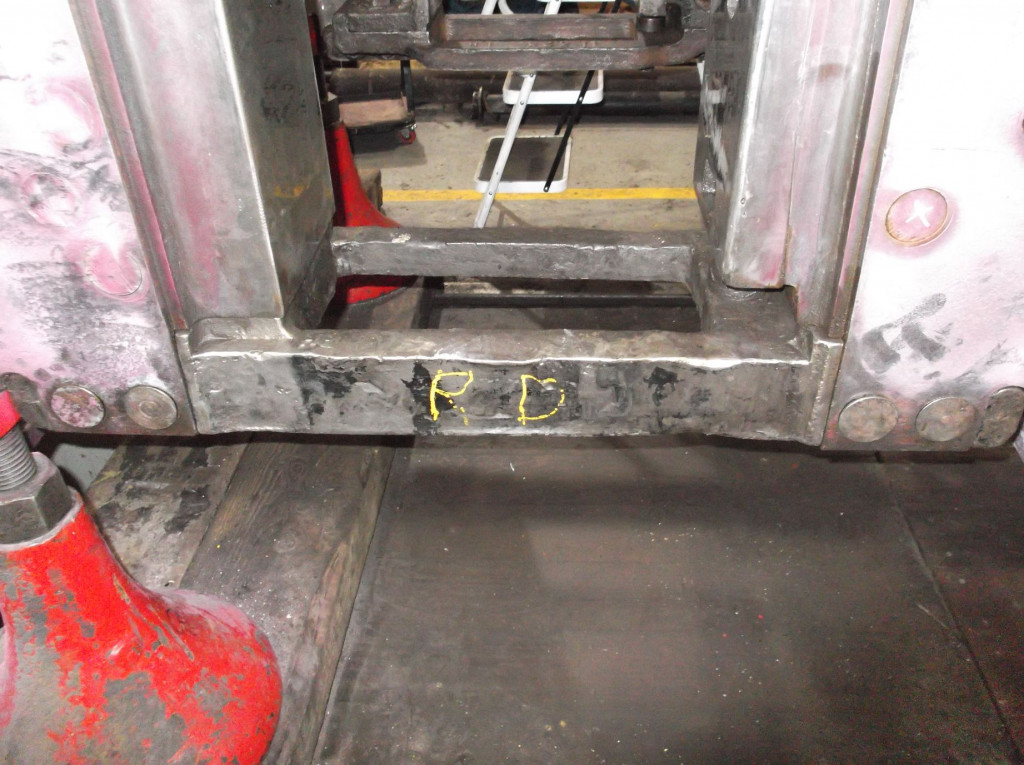
While removed, the mating surfaces on the frames and the hornstay bolts have also been cleaned. They have now been replaced to support the frames but will be removed again for testing to ensure they are free from flaws, then we will move on to the leading and trailing hornstays.

As with the right-hand valve liners, the Chief Mechanical Engineer also requires renewal of the middle valve liners. The leading middle liner was removed on Thursday on the trailing on Friday.
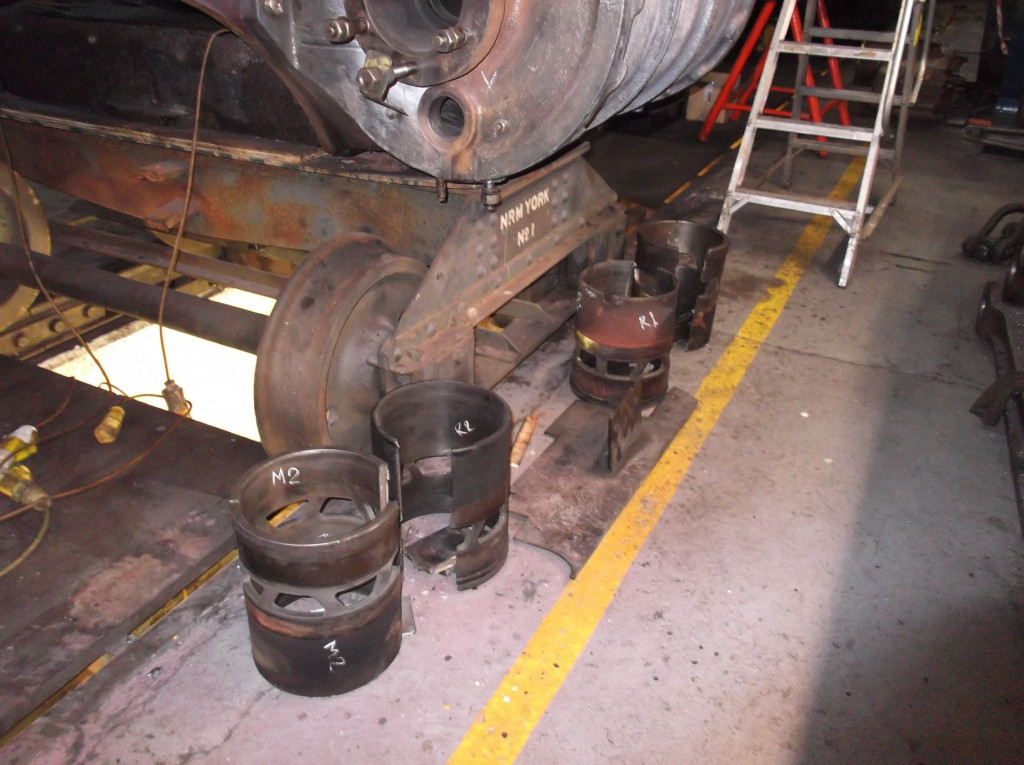
These liners are a little more difficult to get at than the outside ones – however, as with the right-hand ones they were removed without any marking to the cylinder castings. The sealing faces in the castings have been examined and appear to be in good condition, but will be examined in greater detail after cleaning.

This is the 11th update – you can catch up on the previous posts here.

Looking good Darren, watching closely. All the best for 2017. Jock Greig.
i was born in Beresford street. Shildon.my father Jim Nodding worked for British rail from leaving school until they had to lock him out of the Shildon office when he was 69 years old, he just would””’nt retire.a draughtsman all his life with over 55 yrs service with them. we lived and breathed steam engines =all 5 siblings and our poor lovely mam =Laura. everyone around the doors came and knocked @ our front door for train times to here,there, and everywhere,=morning-noon and night, father never got up -it was our job to go back down the passage to who-ever was waiting for an answer,then relay onto them -the times-the changes in platforms,the connections etc.etc.etc= there’s many a time i would’t get it right, did’nt dare go back to ask father again/, oh no, so made it up[fudged it/]and it was always railway time eg.=train leaves Shildon @ 8-20 am, change @ Darlington .connecting train leaves @ 10.05 from platform 3 for say Scarborough